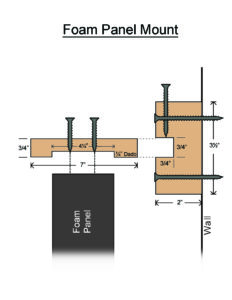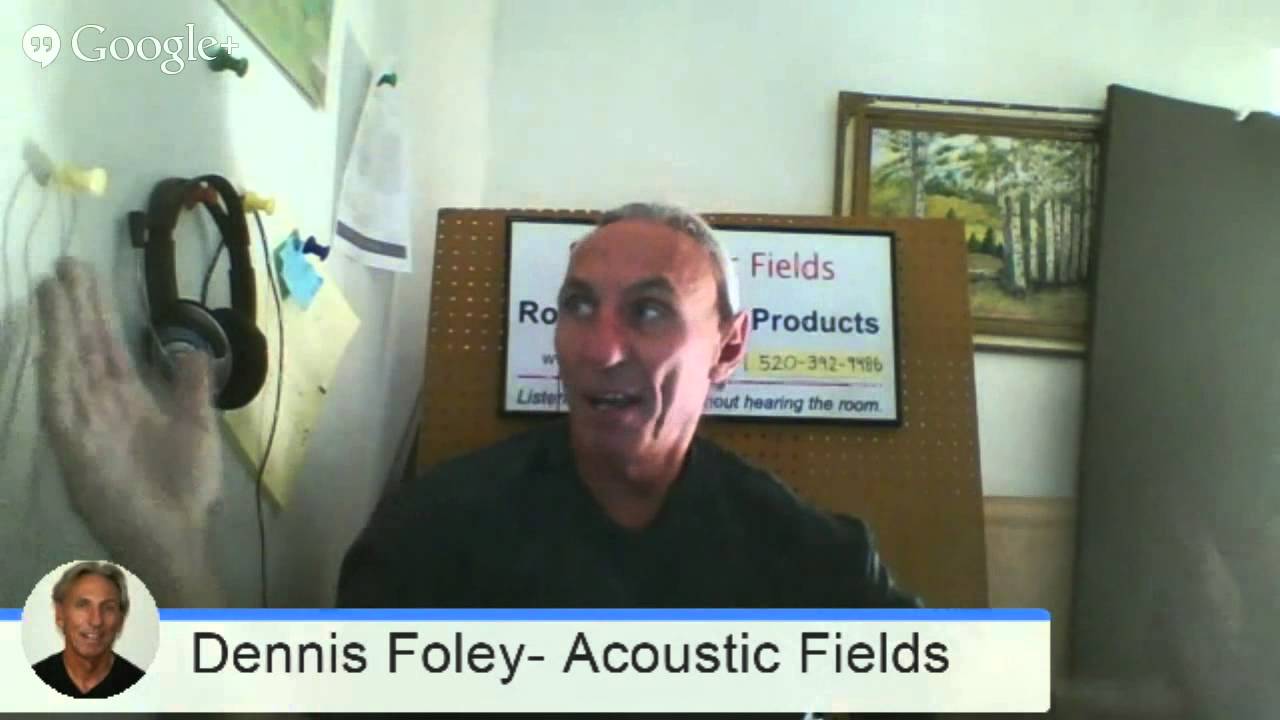Last week I was asked, “Does more space between an acoustic panel and the wall create more absorption?” Well, it doesn’t create more absorption because the device you’re using to absorb the energy has a certain rate and level to work and the laws of Physics tells the product can’t exceed its own qualities, I guess you would say. What it does do, if you leave some space, is it allows the air to move through there so if you’re trying to manage middle and high-frequency issues, that’s a positive because the more surface area you have exposed, the more air movement you have around the sound absorption technology, the more you’re going to be able to manage the reflections. This blog has been updated to include new information regarding an acoustic panel, updated on 12/2/19.
Air Pressure
It works the same way with pressure, although pressure not so much. But yes air-space for middle and high-frequency absorption devices is always welcome. We use anywhere from 2 to 4 inches, it always depends on what you can get away with within the room because if you’re hanging things on the wall to manage reflections and you start leaving a 2 or 3 inch air-space behind them and the panel that you’re hanging is 2 or 3 inches deep, now you’re out 6-inches from the wall that may or may not be an issue.
Acoustic Panels: https://www.acousticfields.com/product/acoustic-panels/
Panel Depth
If people are walking down the wall and you have something on the wall sticking out 6 inches they’ll be hitting it. We did a church a while back where we put our foam on the sidewalls and we left a 2 ½ /3-inch air-space and so now we’re out, kind of into the aisle like 5 inches and you know you have to be careful. People are kind of unaware of it sticking out from the wall. So you have to be concerned with the usage and what you’re trying to accomplish.
Middle and High-Frequencies
Middle and high-frequency absorption work on airflow. The air moves across the open-celled foam and when this occurs we have friction. Friction is then converted to heat. Heat is an energy change and thus during this energy change process, absorption occurs. The goal of managing any middle and high-frequency issues is the square footage of coverage. You must have enough surface area of coverage to deal with the higher reverberation times within your room size and volume.
Reverberation: https://en.wikipedia.org/wiki/Reverberation
Reverberation
Reverberation is the summation of all the reflections off of your room wall surfaces. Reflections are distortion. Distortion keeps us from hearing music and voice. We manage these reflections through the use of sound absorption treatment. This is what acoustic panels do. They absorb energy through the process of friction. We get a lot of questions on how to hang acoustic panels on walls. We build our acoustic panels to be hung like a picture frame on your walls. They are light-weight and can be easily installed with screws or nails. The goal is to have enough surface area coverage to manage the excess energy within your room.

Assembly of Foam Panel Mount
Surface Area
If you need to increase the surface area coverage within your room, you can mount your acoustic panels away from the wall. This process allows you to have airflow on both sides of the panel. What do acoustic panels do? In this case, they can absorb on both sides of the panel. Which mounting system to be used has to be calculated based upon the reverberation times within your room, the usage of your room, and a host of other variables. Mounting the acoustic panels away from the wall allows for airflow on both sides of the panel and increases the amount of absorption since we are allowing airflow on both sides to occur.
In Summary
I hope today’s discussion helps solve the problem you are having. Please message me at info@acousticfields.com if you have any questions as I am always happy to help. If you want more to learn more about room acoustics please sign up for our free acoustic video training series and ebook. Upon sign up you will instantly have access to a series of videos and training to help improve the sound in your studio, listening room or home theatre.







